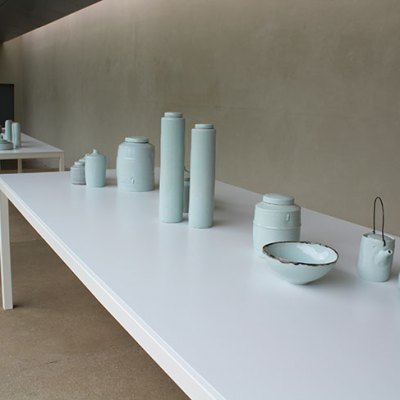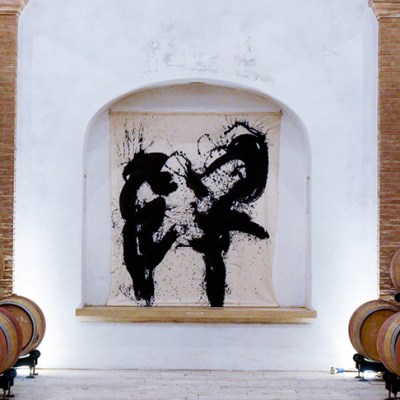From the November 2022 issue of Apollo. Preview and subscribe here.
In May 1929 a pair of imperial Chinese porcelain bowls, dating to the Qianlong reign (1736–95) of the Qing dynasty, was sold in London from the collection of Captain Charles Oswald Liddell, who had acquired most of his porcelains in China between 1877 and 1913 – several purchased from the collection of Prince Qing. One of the bowls was sold to the Hon. Mountstuart William Elphinstone, while the other was sold to Charles Russell, each for the sum of £150. The Elphinstone bowl was later acquired by Percival David and is currently on long-term loan to the British Museum. The Russell bowl subsequently entered several major international collections and was purchased most recently by Alice Cheng, in Hong Kong in 2006, for approximately £10m.
The bowls are small (11.3cm in diameter), but belong to the most highly esteemed group of Qing dynasty porcelains, known in Chinese as falangcai. The porcelain bowls would have been made at the imperial kilns at Jingdezhen in Jiangxi province and then sent more than 1,000km north to the imperial ateliers within the Beijing palace to be decorated in overglaze enamels by the most skilled ceramic artists. As is the norm for pairs of this kind, the decoration on the two bowls is complementary rather than identical, and the designs are in approximate mirror image. Seen in panorama, the decoration is arranged as a Chinese horizontal handscroll depicting swallows flying among blossoming apricot and willow branches, while on the other side of the bowls there is a calligraphic poetic couplet accompanied by three painted seals, each containing two characters. These translate as: ‘beautiful’, ‘early spring’ and ‘dawn radiance’.
The content of the decoration on the bowls was chosen with great care – apricot, willow and swallows all being imbued with auspicious meaning. Willow leaves were a sign of spring, vitality and the return of light, and in Chinese art could also be used as a rebus for gaiety and pleasure. Because of its delicacy, beauty and suppleness, willow was sometimes seen as an emblem of beautiful women. Willow was also believed to repel demons, and the trees were often planted at the door of a house. Willow branches were given as protection to friends about to undertake journeys.
Apricot trees were cultivated in China for their fruit at least as early as 500 BC, and were popular in gardens and temple and palace courtyards. The apricot was also a symbol of a beautiful woman. The so-called Elegant Gathering in the Apricot Garden in April 1437, at which a number of China’s social elite met in a garden belonging to Grand Secretary Yang Rong (1371–1440), became a popular subject for artists and poets. Apricot symbolises the second month of the lunar calendar, the month when the results of imperial civil service examinations were published: the emperor would give a banquet for successful candidates in the Apricot Grove.
The swallows are also an important part of the message of the bowls. In China, swallows were regarded as auspicious: a sign of spring, symbolising a successful future, happiness and the arrival of children. But the Chinese word for swallow is a homophone for the word for banquet; so, combined with the apricot, the swallows suggest the wish: ‘May you attend the spring banquet in the Apricot Grove’. The poetic couplet accompanying the apricot blossom and swallows on the bowls appears to have been abstracted from a poem ‘written by imperial command’ on a fan-painting of apricots and swallows by a powerful Ming dynasty official, Grand Secretary Shen Shixing (1535–1614). The porcelain decorator has taken only two lines from the original poem and has omitted two Chinese characters from each of those lines. The couplet on the porcelain may be translated:
Jade shears dart through the flowers
As a Daoist immortal in rainbow gown with the moon returns.
The phrase ‘jade shears’ refer to the swallows scissors-shaped tails. ‘Rainbow gown’ is a more complex literary reference. Specifically, it refers to a song called ‘Gown of Rainbow Feathers’, believed to have been composed by the Tang dynasty Emperor Xuanzong (712–56). ‘Gown of Rainbow Feathers’ was to become a favourite of the emperor’s beautiful and beloved concubine, Yang Guifei. In the dance that was performed to this music the dancers wore robes adorned with peacock feathers to represent fluttering Daoist immortals in flight.
The Tang dynasty poet Bai Juyi (772–846) romanticised this dance in his poem ‘Song of the Gown of Rainbow Feathers’, but also refers to this particular dance in his epic poem ‘Song of Eternal Regret’, which tells the story of the Emperor Xuanzong’s passionate love for Yang Guifei, his sorrow when he was unable to prevent her execution by his own soldiers, and his search thereafter to find her spirit. The poem relates that a Daoist monk found Yang Guifei’s spirit in the form of an immortal and describes how:
The wind billowed and fluttered the immortal’s sleeves,
As if she still danced the ‘Gown of Rainbow Feathers’ dance.
From the November 2022 issue of Apollo. Preview and subscribe here.


